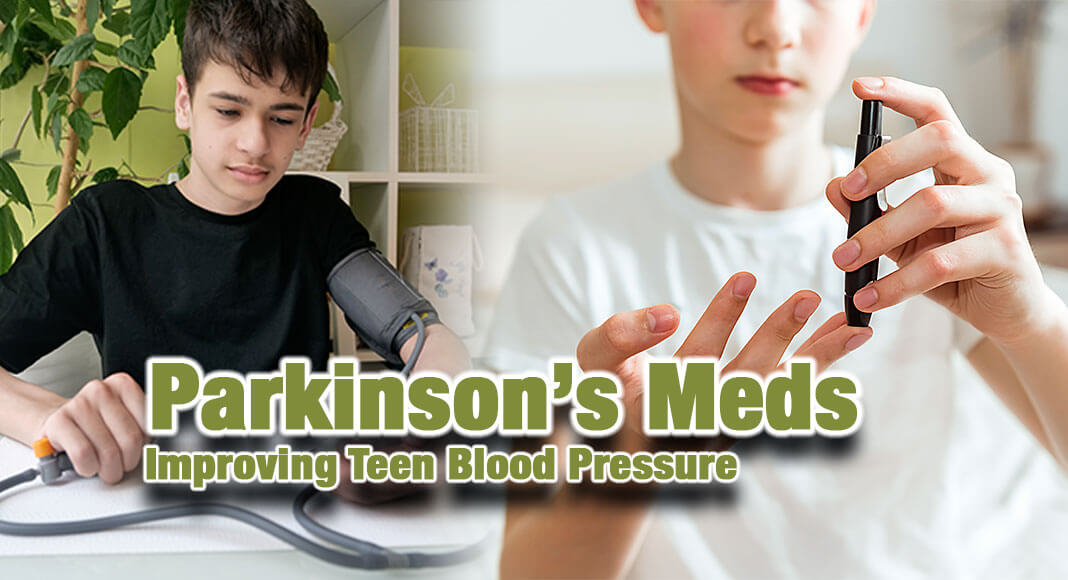
Mega Doctor News
By American Heart Association (AHA)
Newswise – Teens with Type 1 diabetes (T1D) who took bromocriptine, a medication used to treat Parkinson’s disease and Type 2 diabetes, had lower blood pressure and less stiff arteries after one month of treatment compared to those who did not take the medicine, according to a small study published today in Hypertension, an American Heart Association journal.
High blood pressure and stiff arteries contribute to the development of heart disease. People with T1D, a lifelong, chronic condition in which the pancreas doesn’t produce enough insulin to control blood sugar levels, have a higher risk of developing heart disease than those without the condition. Those diagnosed with T1D as children have even higher risks for heart disease than people diagnosed in adulthood. Therefore, researchers are interested in ways to slow down the onset of vascular disease in children with T1D.
“We know that abnormalities in the large vessels around the heart, the aorta and its primary branches, begin to develop in early childhood in people with Type 1 diabetes,” said lead study author Michal Schäfer, Ph.D., a researcher and fourth-year medical student at the University of Colorado School of Medicine in Aurora, Colorado. “We found that bromocriptine has the potential to slow down the development of those abnormalities and decrease the risk for cardiovascular disease in this population.”
The multidisciplinary team conducted this study to examine the impact of bromocriptine on blood pressure and aortic stiffness compared with a placebo in adolescents with Type 1 diabetes. Bromocriptine is in a class of medications called dopamine receptor agonists. It increases levels of dopamine, a chemical in the brain, which leads to an increase in the body’s responsiveness to insulin, called insulin sensitivity. Bromocriptine has been FDA-approved since 2009 to treat adults with Type 2 diabetes due to its effect on insulin sensitivity.
The study included 34 participants (13 male, 21 female) ages 12 to 21 years who had been diagnosed with Type 1 diabetes for at least a year, and their HbA1c (glycosylated hemoglobin – a measure of blood glucose) was 12% or less. An HbA1c level of 6.5% or higher indicates diabetes. They were randomly divided into two groups of 17, with one group receiving bromocriptine quick-release therapy and the other receiving a placebo once daily. The study was conducted in two phases. Participants took the first treatment or placebo for 4 weeks in phase 1, then had no treatment for a 4-week “wash-out” period, followed by phase 2 with 4 weeks on the opposite treatment. In this “crossover” design, each participant served as their own control for comparison.
Blood pressure and aortic stiffness were measured at the start of the study and at the end of each phase. Aortic stiffness was determined by assessing the large arteries with cardiovascular magnetic resonance imaging (MRI) and a measurement of the velocity of the blood pressure pulse called pulse wave velocity.
The study found:
- Compared to placebo, blood pressure was significantly decreased with bromocriptine. On average, bromocriptine therapy resulted in a systolic blood pressure decrease of 5 mm Hg and a diastolic blood pressure decrease of 2 mm Hg at the end of 4 weeks of treatment.
- Aortic stiffness was also reduced with bromocriptine therapy. The improvement in aortic stiffness was most pronounced in the ascending aorta with a lowered pulse wave velocity of about 0.4 meters/second, and an increase in distensibility, or elasticity, of 8%. In the thoraco-abdominal aorta, bromocriptine was associated with a lowered pulse wave velocity of about 0.2 meters/second, with a 5% increase in distensibility.
“A stiff aorta predisposes a patient to other health issues, such as organ dysfunction or atherosclerosis and higher stress or strain on cardiac muscle,” Schäfer said. “We were able to take it a notch further and show, using more sophisticated metrics, that these central large arteries are impaired, and impairment among adolescents and young adults with Type 1 diabetes may be decelerated with this drug.”
The study’s small size is a limitation. However, the researchers note that further research into bromocriptine’s impact on vascular health in a greater number of people with Type 1 diabetes is warranted; they are planning larger trials.
Co-authors are Lorna P. Browne, M.D.; Uyen Truong, M.D.; Petter Bjornstad, M.D.; Shoshana Tell, M.D.; Janet Snell-Bergeon, Ph.D.; Amy Baumgartner, M.S.; Kendall S. Hunter, Ph.D.; Jane E. B. Reusch, M.D.; Alex J. Barker, Ph.D.; Kristen J. Nadeau, M.D., M.S.; and Irene E. Schauer, M.D., Ph.D.
The National Institutes of Health funded the study.
Studies published in the American Heart Association’s scientific journals are peer-reviewed. The statements and conclusions in each manuscript are solely those of the study authors and do not necessarily reflect the Association’s policy or position. The Association makes no representation or guarantee as to their accuracy or reliability. The Association receives funding primarily from individuals; foundations and corporations (including pharmaceutical, device manufacturers and other companies) also make donations and fund specific Association programs and events. The Association has strict policies to prevent these relationships from influencing the science content. Revenues from pharmaceutical and biotech companies, device manufacturers and health insurance providers and the Association’s overall financial information are available here.
Additional Resources:
- Available multimedia is on right column of release link https://newsroom.heart.org/news/parkinsons-medication-improved-blood-pressure-in-teens-with-type-1-diabetes?preview=f3c4de180fef9a3522249c64aad0e931
- Spanish news release
- After Dec. 6, view the manuscript online.
- AHA news release: Diet change may make biggest impact on reducing heart risk in people with hypertension (Sept. 2022)
- AHA health information: Diabetes
- Follow AHA/ASA news on Twitter @HeartNews
- Follow news from the AHA’s Hypertension journal @HyperAHA









